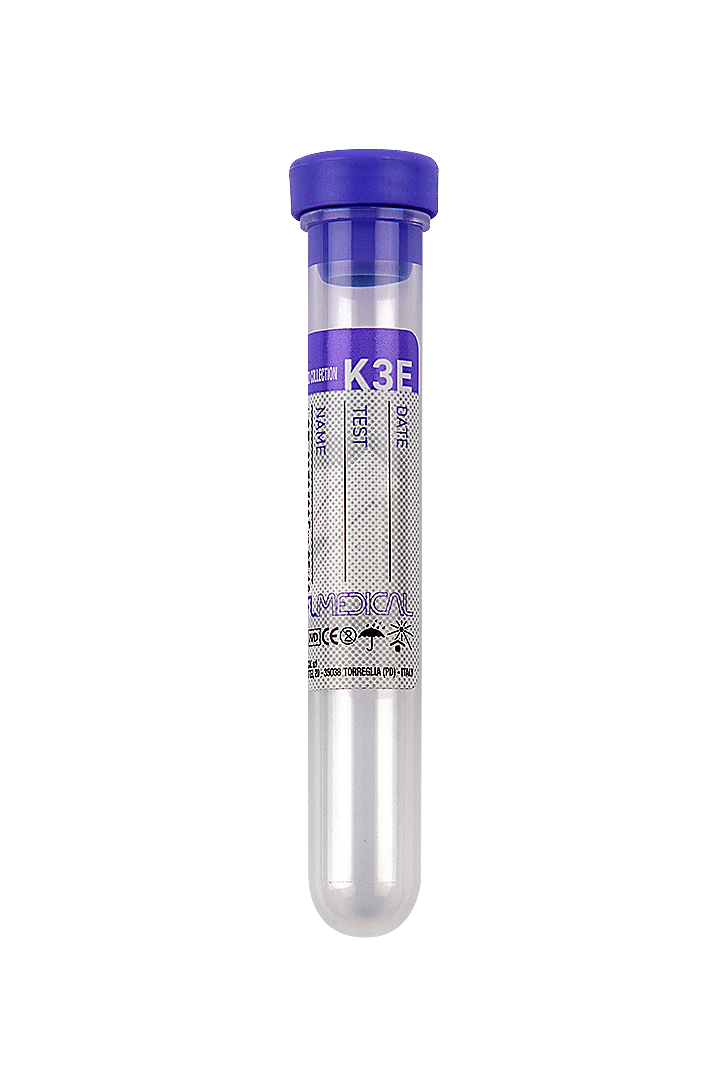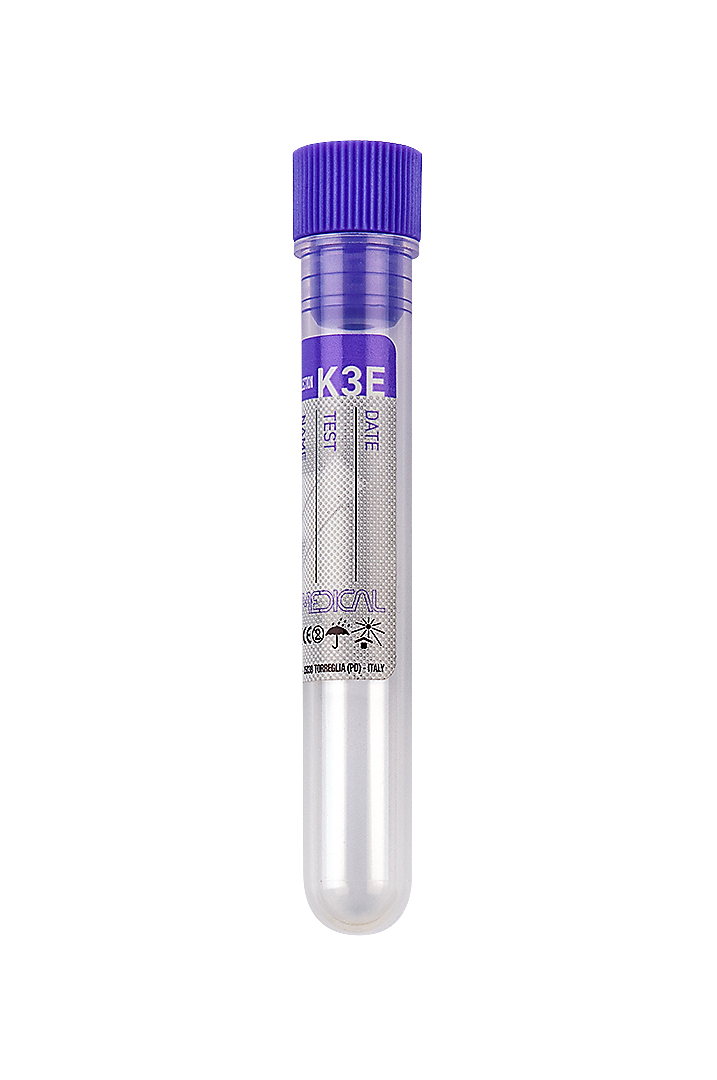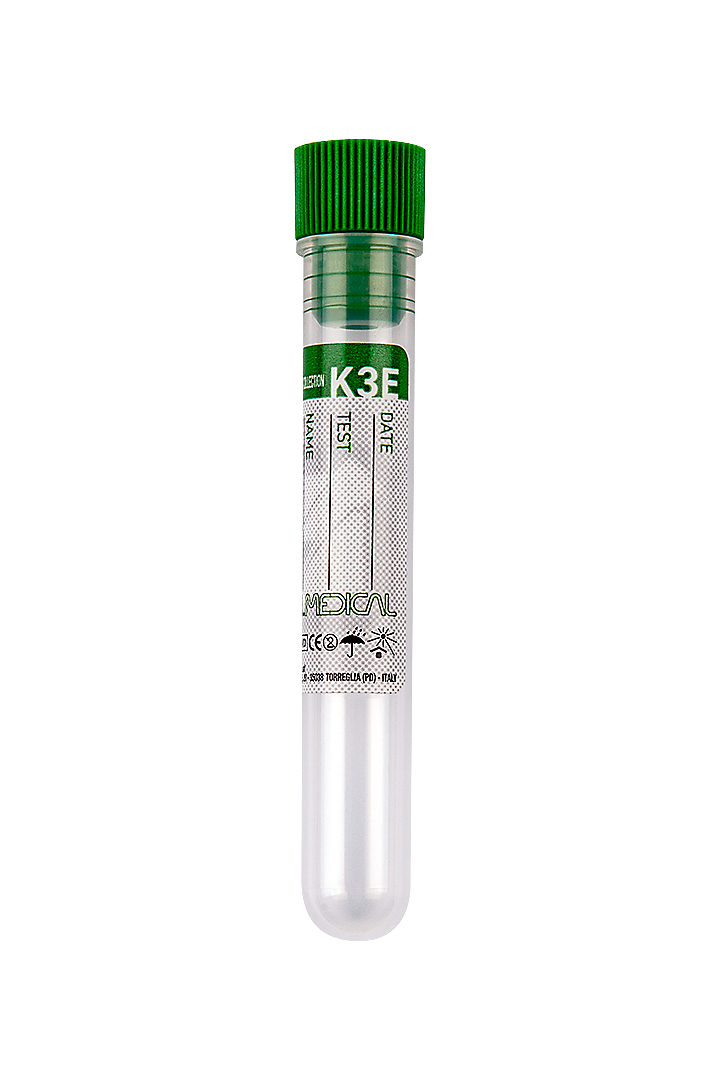Test tubes with K3 EDTA
 EDTA tubes (with ethylenediaminetetraacetic acid) are designed for whole blood analysis in haematology to determinate erythrocytes, leukocytes and thrombocytes, as well as in molecular diagnostics, for DNA extraction and genetic tests.
EDTA tubes (with ethylenediaminetetraacetic acid) are designed for whole blood analysis in haematology to determinate erythrocytes, leukocytes and thrombocytes, as well as in molecular diagnostics, for DNA extraction and genetic tests.
The EDTA prevents the coagulative cascade by binding to calcium ions. Tubes with EDTA reduce the risk of haemolysis and are particularly useful in tests that require detailed analysis, such as complete blood count, preventing the alteration of laboratory parameters.
The anticoagulant agent EDTA was discovered in 1935 by Gerold Schwarzenbach, and over time several variants have been developed to suit specific diagnostic and research needs.
EDTA tubes: types and common applications
EDTA tubes are available in K2 and K3 version, both consisting of potassium ions chelated by EDTA. Tubes with EDTA K2 have two potassium ions, whereas tubes with EDTA K3 have three. Tubes with EDTA K2 slightly increase the MCV (mean corpuscular volume) of red blood cells at higher concentrations.
– Tubes with EDTA: use in blood tests
Tubes with EDTA are essential for blood tests. In complete blood count (CBC), which provides detailed information about blood cells, such as the number of red and white blood cells and platelets, as well as the measurement of blood parameters such as hemoglobin and hematocrit.
They are also important to determine the ESR (Erythrocyte Sedimentation Rate), which measures the rate at which red blood cells separate from plasma. This test is often used as a non-specific indicator of body infection.
Another use concerns the Hemoglobin A1c (hba1c), which represents the percentage of glucose-linked hemoglobin in blood. This is an useful test for monitoring and managing glycemic control in diabetic patients over time.
– Tubes with EDTA: specific uses in molecular tests
EDTA tubes are widely used in diagnostic molecular tests, which rely on genetic material analysis, such as DNA extraction and polymerase chain reaction (PCR) amplification.
EDTA plays a key role in molecular testing, preventing blood clotting during handling and storage, keeping intact the DNA without affecting amplification reactions and allowing accurate genetic analysis, e.g. in the diagnosis of inherited genetic diseases or in the determination of specific genetic variants. In addition, EDTA tubes are used in next-generation sequencing (NGS), which allows the analysis of entire genomes or specific regions of DNA.
EDTA ensures sample stability throughout the preparation and sequencing process.
Emerging trends and innovations in tube technology with EDTA
Test tube production technology with EDTA continues to evolve, with the goal of improving its stability, effectiveness and integration into laboratory workflows.
Emerging trends include new additives to improve the test tubes stability, which can help prevent sample degradation over time. In addition, with the advancement of robotics and automation in the diagnostic laboratory field, EDTA test tubes are increasingly integrated into automated workflows to implement productivity, reduce human errors, and improve traceability.



















